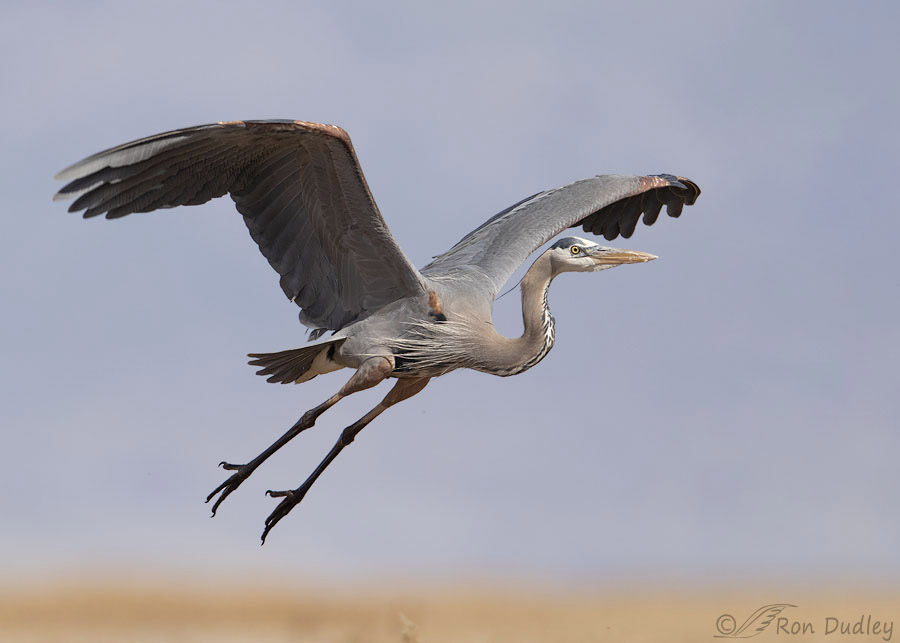Another short post today. I’m a busy boy these days.

1/2500, f/6.3, ISO 500, Canon 7D Mark II, Canon EF 500mm f/4L IS II USM + EF 1.4 III Extender, not baited, set up or called in
This is the same Great Blue Heron at Bear River MBR I’ve posted many other photos of recently. I didn’t include this one in the previous series because ‘he’ was too close to the right edge of the frame. For this version of the image I’ve added canvas there for purposes of composition.
For me this photo is largely about “legs”. The heron’s very long legs are mostly in the shade of the right wing which causes them to be in silhouette and highly prominent against the much lighter background.
And I love the unusually good look at his knobby “drumsticks”.
Ron


Very nice shot, I did notice the 3D effect too. I did not notice the smile and I like it.
April, I like to pay pretty close attention to the photos I post but blog followers often notice things I missed, including the ‘smile’ with this bird.
Not a lot of meat on those drum sticks. Lyle’s comment fascinated me. And wouldn’t surprise me.
Another downright fascinating photo – and a commentary which makes me smile AND learn things.
“Not a lot of meat on those drum sticks”
Ha, I noticed that too, EC. And I kinda think Lyle might me onto something too.
Just wow!
Thanks, Mary.
Those legs are works of art.
“Those legs are works of art”
If not aesthetically, at least evolutionarily.
There is a remarkable 3D effect, probably enhanced by the extra room in front of the bird.
I see what you mean, Ken.
What a great shot! His markings make him look like he’s grinning (or maybe I’m grinning so hard that I’m projecting it on to him) as if he’s saying, “Caught ya checkin’ out my gams!”
Now that you mention it I do see a slight ‘grin’ on his face. Thanks, Marty.
Almost everything about the Grest Blue Heron is so graceful and elegant. But then there’s those decidedly comical knobby knees.
I’ve got a theory about those legs. They look to be all tendon and bone but awhile back I was watching a Heron slowly wade in the shallows along the sea shore. He was looking intently straight ahead the way they do and suddenly his head turned back 180 degrees and he nabbed a fish directly behind his legs. So I think those legs might be innervated enough to detect the water disturbance caused by fish swimming nearby. Maybe no surprise to ornithologists but I thought it was a pretty neat trick.
Interesting theory, Lyle. And you cite some evidence that suggests it might be true. Wouldn’t surprise me…
Nice shot. Those knobby drumsticks support that large body and that huge wing span and can stand for hours waiting for a fish to swim by.
We are having a migratory explosion here – Green Heron, Black-crowned Night Heron, Forster’s Terns, Caspian Terns, Black-necked Stilts, Avocets, 3 different Gull species, White-faced Ibis, Snowy Egrets, Great Egrets, Wilson’s Phalaropes, and more song birds than I can list.
Thanks, Everett. That’s great news about your abundant birds.
Got to love the talons (along with the knees)! I think they are called talons on this species…something I’ve never thought about or checked.
Kathy, I’d never herd of heron claws called talons but some quick research suggests that they sometimes are.
Those “drumsticks” definitely are knobby and don’t look real in some ways.
Interesting mechanics at work there! Beautiful shot, Ron…
When I can see those drumsticks clearly it always makes me smile. Thanks, Judy.